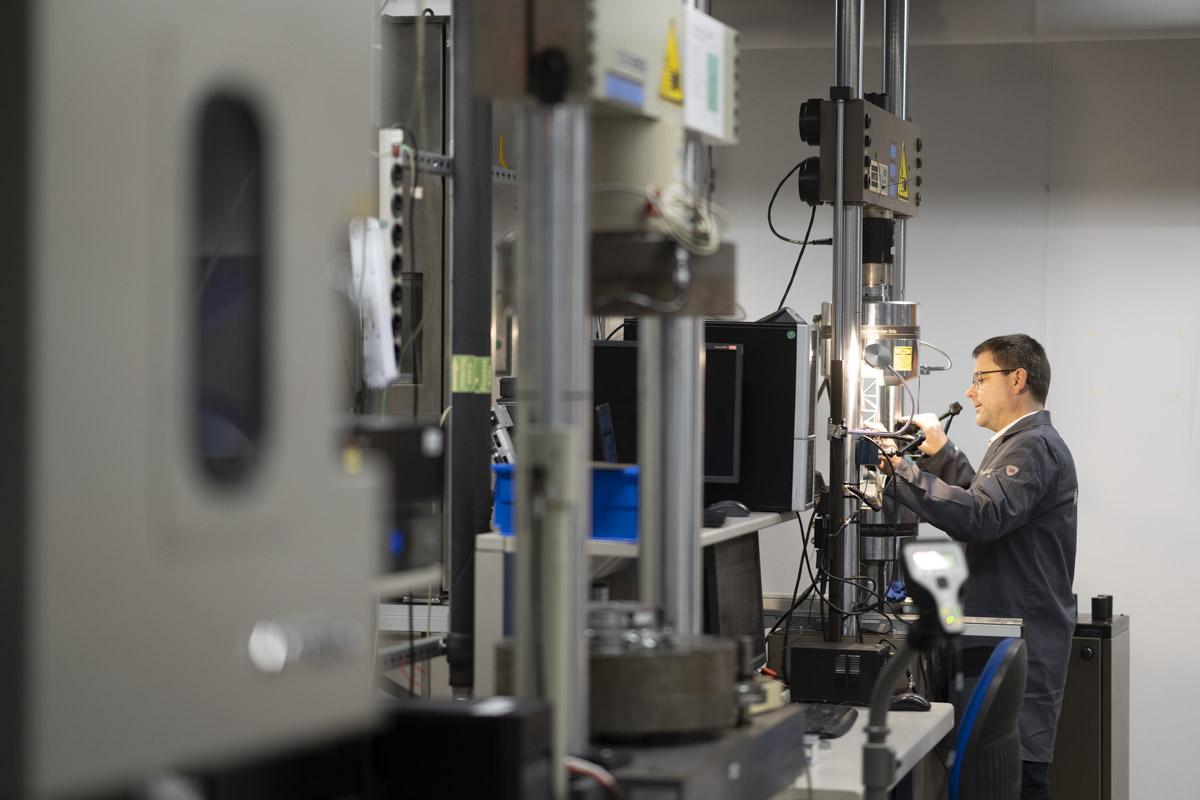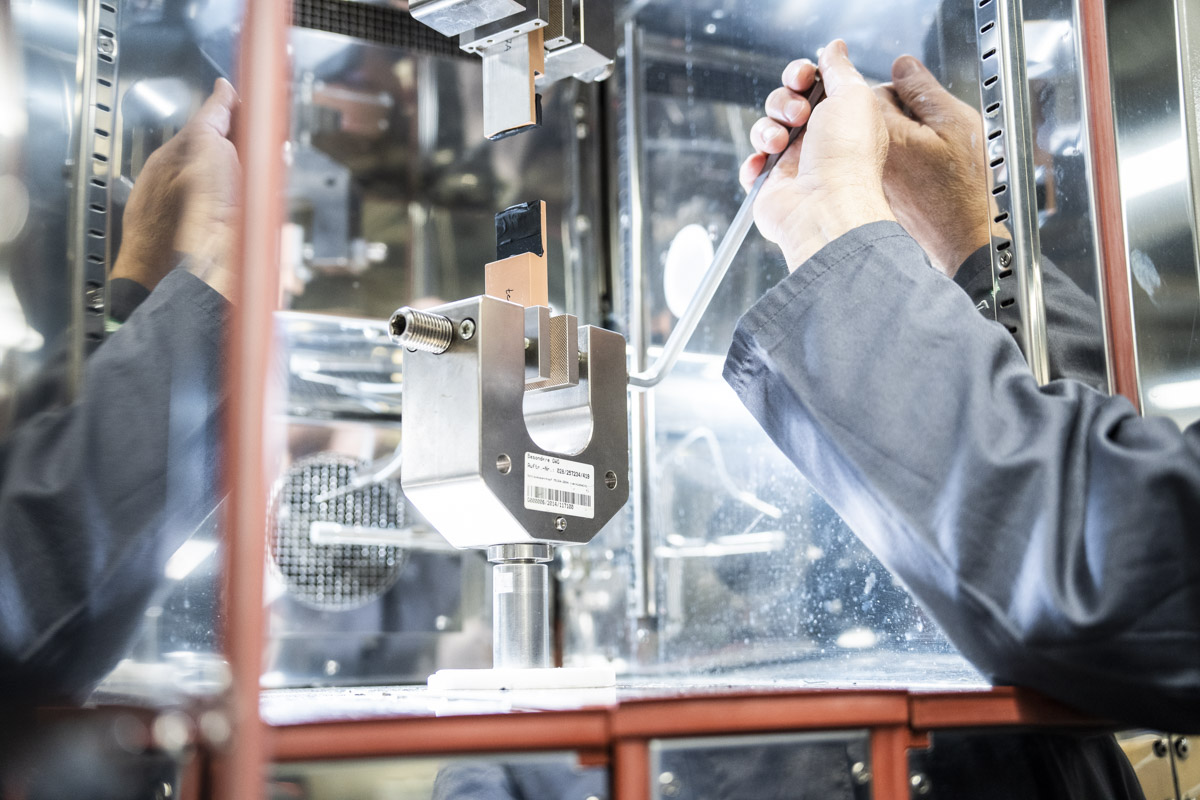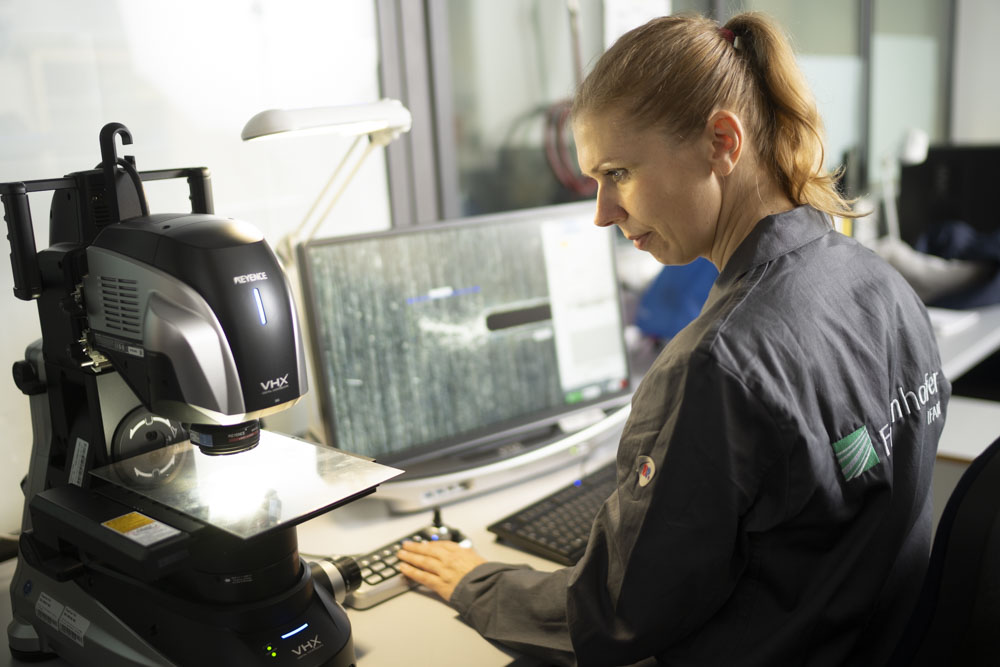Mechanical testing, component simulation and testing of bonded joints



Fraunhofer IFAM has a materials testing laboratory certified according to DIN EN ISO 9001:2015. This laboratory is accredited according to DIN EN ISO/IEC 17025:2018 for the procedures specified in the DAkkS certificate. Experiments are carried out to test materials, structures and, in particular, adhesively bonded joints according to standardized and self-developed procedures for example for the automotive industry or rail vehicle construction. The results of these tests form the basis for simulating component behavior. Many of the tests focus on the tensile behavior of fiber-reinforced plastics, but also on the impact strength and peel strength of adhesively bonded joints. Particularly in order to describe the complex behavior of adhesively bonded joints, the researchers also develop customized test methods as required.
The materials testing laboratory is equipped with various test rigs for mechanical testing of materials and components. Especially for polymeric materials, fiber-reinforced composites, adhesives and adhesively bonded joints, structural properties are determined, such as:
- Stiffness and strength
- Fatigue and durability
- Creep behavior
- Fracture mechanical properties
The material characteristic values are provided for finite element simulations, which will also be performed in-house at the customer's request. In addition, the characteristic values can form the basis for the verification of adhesively bonded structures and components, e.g. in accordance with DIN 6701.
Electromechanical and servohydraulic testing machines
The materials testing laboratory offers capabilities to test materials, adhesive bonds and structures up to 2 meters.
The electromechanical testing machines are used, for example, to perform tensile and compression tests on adhesives and adhesively bonded joints and fiber composites. These testing machines are suitable for pull-off speeds of up to approx. 0.01 m/s. Servo-hydraulic and electrodynamic test rigs are available for tests under oscillating loads of up to 50 Hz. Tests with crash-relevant speeds of up to 20 m/s can be carried out on a special high-speed testing machine.
For tests at practice-relevant ambient conditions, almost all testing machines are equipped with climatic or temperature chambers. Currently, tests can be carried out in the temperature range from -50° C to 200° C. In addition, tests in liquid nitrogen (-196° C) are possible. A test system for the range between -170° C and -50 °C is also available.
Static test systems using weights and springs are available for creep tests. In addition, researchers can set up test systems for special applications and component testing.
Tactile and optical measurement systems are available for precise deformation measurements, such as those required for thin adhesive layers.
- Inductive and capacitive sensors
- Video extensometers
- Laser extensometers
- Digital image correlation
- Strain gauges
 Fraunhofer Institute for Manufacturing Technology and Advanced Materials IFAM
Fraunhofer Institute for Manufacturing Technology and Advanced Materials IFAM

